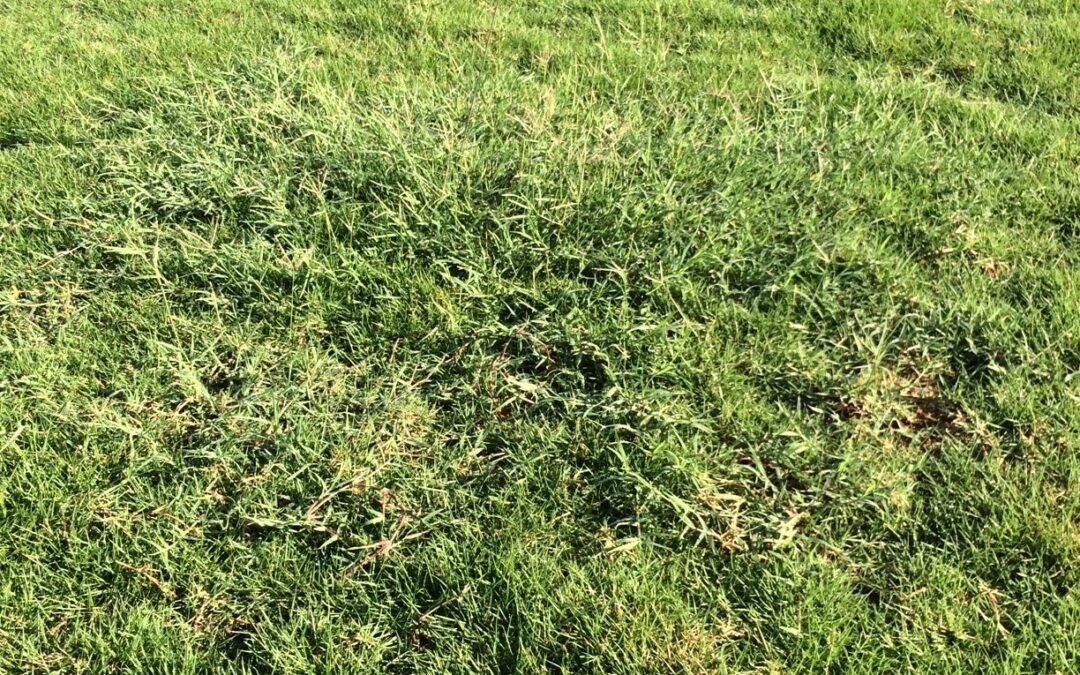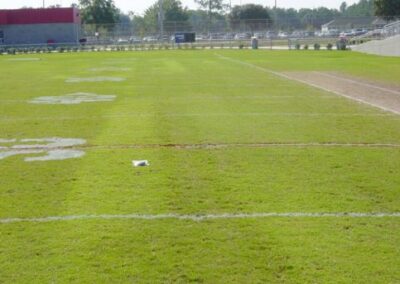Presentation from February 2007
Terry Hollifield, executive director of Georgia Crop Improvement Association
Why Was ITGAP Created?
Maintain identity of turfgrass varieties
- University of Georgia varieties
- Privately released varieties
Establish production protocols to assure purity and quality
- contamination
- other crop
- weeds
Past Experience
- Tifway
- Tifdwarf
There are a large number of turfgrass cultivars available to the industry.
More opportunity for misidentification of varieties
- More opportunity for contamination of varieties
Modern day turfgrass varieties are chosen and planted for specific characteristics that they possess.
Desirable characteristics
- Density
- Temperature tolerances + –
- Susceptibility to chemical injury
- Traffic tolerance
- Spring emergence
- Mowing frequency
- Disease and insect resistance
- Uniformity
- Etc.
Contamination = Nonuniformity
Compromises desirable characteristics
- Color
- Cold tolerance
- Chemical injury
- Traffic tolerance
- Rate of growth
- Spring emergence
- Salt tolerance
- Disease & insect resistance
Why Do You “The Producer” Need To Be In ITGAP?
- Access to newer varieties
- Marketing
- Expectations of developers
- Product Quality
- Repeat customers
- Allows you to elevate your farm above the rest
- Quality management system
- Third party inspections
- Promote varietal purity
ITGAP Protocols
Application for membership and inspection To:
Georgia Crop Improvement Association
2425 South Milledge Ave
Athens, GA 30605
Land Requirements
- Production fields must be inspected prior to planting
- Free of contaminating other species
- Fields prone to flooding not acceptable
- Wind/traffic barriers may be required
Dedicated Equipment
- Mowing equipment must be dedicated for each variety produced under the ITGAP program.
- Non-dedicated equipment (tractors, fertilizer equipment, spray equipment) must be thoroughly washed prior to entering ITGAP fields.
- Wash facilities must be available for cleaning equipment.
- At no time should non dedicated equipment (mowers, harvesters, tractors) be allowed to travel from non program fields across ITGAP fields
- Barriers may be required. why????
- Wheeled (center pivot) irrigation systems must travel on program fields of the same variety only.
- Irrigation equipment that is mobile must be dedicated and not moved from field. why????
Field Requirements
- Isolation from any other varieties
- 20 meters if source of possible contamination produces seed or pollen
- 3 meters from non-seed or pollen producing varieties
- Bare land
- Artificial barrier
Planting Stock
- Sources must be approved prior to planting
- ITGAP must have documentation of planting stock:
- Producer
- Date of harvest
- Kind and variety
- Quantity
Expansion of Fields
- Foundation planting material when establishing a farm nursery will be planted on fumigated land.
- Fumigation material and rates to be approved by ITGAP Administrator
Life of Production Field
- Five year limit
- Fields can be extended beyond five years upon successful completion of intensive inspections
- ITGAP may require grow out test, DNA test, etc.
Field Inspections
- Fields must be inspected annually by an ITGAP representative
- Quarterly inspections by producer is required and must be documented
- Fields must be grown using good practices
- Adequate water
- Fertility
- Pest control
- Mowing
Field Standards
- Annual or quarterly inspections
- Maximum of an average of 3 plants of another variety per ha.
- Bermuda in Paspalum
- Zoysia in Bermuda
- ETC.
Re-Inspections
Fields exceeding an average of 3 plants per Ha of another variety must be reinspected
Certificates of Assurance
- ITGAP certificates will accompany each shipment of grass.
- Available from program administrator
- The certificate will display:
- Kind and variety
- Quantity shipped
- Field number
- Date of harvest
- Producer’s name
- Signature





